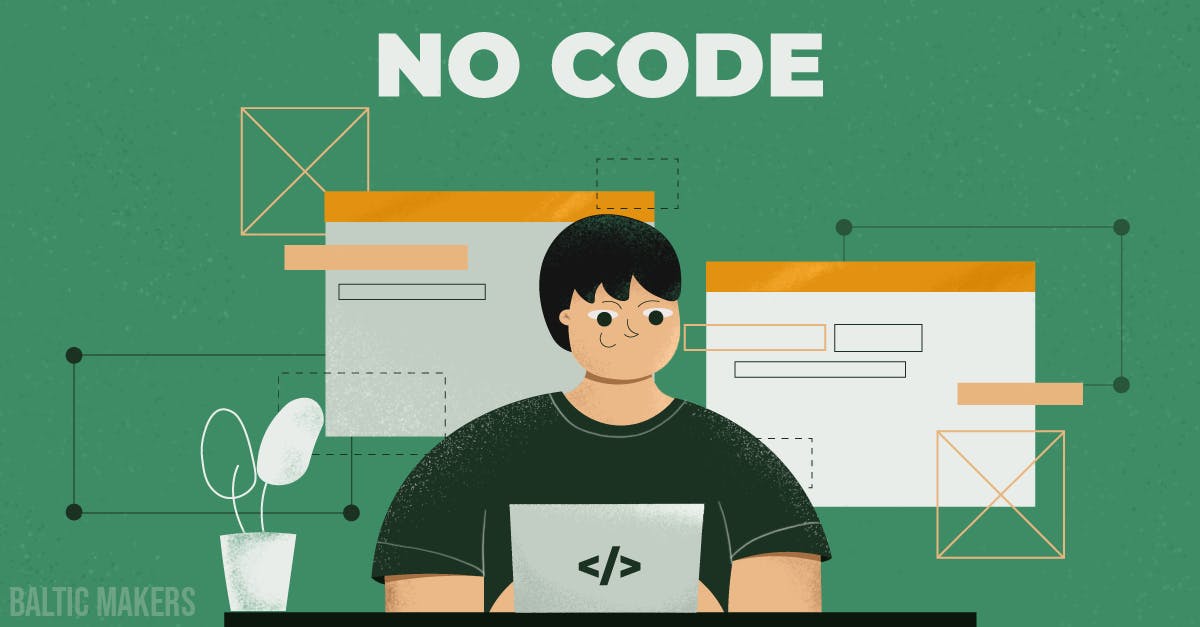The global development market is turning to no-code platforms, but is it a force to reckon with? From 13.2 billion USD in 2020, the no & low code market is expected to grow to 45.5 billion by 2025 as more companies and individuals choose them for their strategic needs. To put it into perspective let's look at Wordpress, one of the oldest content management systems there is. As of 2020, 455 million websites run on it, which is 35% of all websites. The reason for that? Wordpress websites can be created and launched without writing a single line of code, thus it opens the doors to many users not having enough technical knowledge to code and host their websites.
No-Code startups to watch out for in Baltics

But that is not the only thing no-code platforms can be used for, with no code you can create app designs, prototypes and even launch a fully functional one, as well as create and automate email newsletters, and just generally automate anything to connect all the bits and pieces you created with no code. Just to mention some such tools are: Squarespace, Zapier, Mailchimp, Salesforce, Airtable, and others.
We talked about the growth and importance of the no-code platforms, but what is no-code development? Well, as the name implies, it’s software creation without the need for code with the help of a graphical user interface. Low-code development employs a GUI as well, however, it also requires some level of coding to ensure system functionality. Although low-code is more difficult and thus not an option for most non-programmers, it does provide more freedom on what and how the system does. The reason for bringing both of these up is that most of the time - these two terms are mixed up and that's understandable.
Platforms may allow development with both no or low-code, making the differences only obvious under the GUI, however, the common trait they share is that both methods are set to revolutionize software development as a whole. They set to do so by allowing people with no coding background to create their own apps or websites and even assisting developers and companies by increasing productivity & reducing costs of development. The Baltic's are no exception in this case, and not only in choosing low-code but also in providing tools & platforms for the cause, here are just a few among all worth mentioning:
Promising no-code and low-code Baltic startups (as of 2020)
| Company Name | Estimated Annual Revenue | Num. of Employees |
|---|---|---|
| Mozello | €13,500,000.00 | 6 |
| Mailigen | €12,700,000.00 | 33 |
| Mailerlite | €7,420,000.00 | 87 |
| FROONT | €1,690,000.00 | 10 |
| Zyro Inc. | N/a (Could not find revenue numbers. €418,507.00 is the amount of taxes they paid in 2020) | 73 |
Note: Revenue data provided by Owler.com
No-code platforms empower citizen developers to create their own products and even assist seasoned developers and companies. The impact and need for such platforms is clearly visible now not only in the numbers of them to choose from but as well as their size in the global development market and all of these numbers are only predicted to grow. We might be looking into a future where anyone will be just a few clicks away from visualizing, developing, and releasing their products.